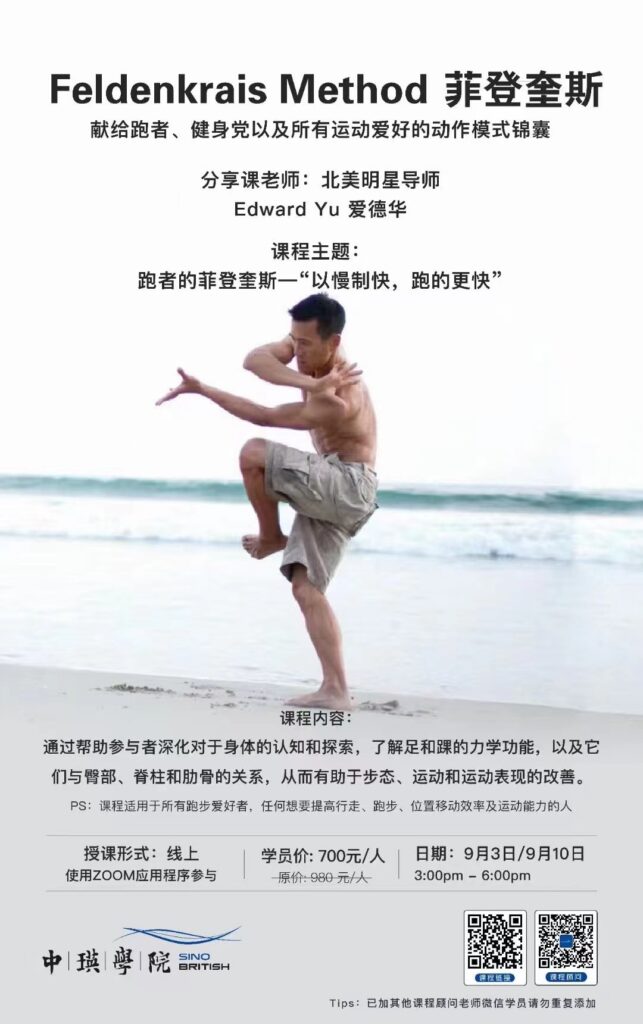
Online Running Workshop in Shanghai, China



It is not uncommon, when watching Olympic runners bounding across the track in their typically graceful and relaxed manner, to feel as if they are floating on air. Their apparent effortlessness is due in no small part to their ability to coordinate (or synchronize) their feet, hands, arms, and legs such that they move in a cooperative, and even synergistic fashion. In fact, producing an efficient and powerful stride can be thought of as the act of coordinating (or synchronizing) the movements of your entire body from metatarsal to metacarpal, and head to toe, in such a manner that the whole becomes greater than the sum of its parts and muscular force, rather than being additive, becomes multiplicative.
Continue reading(A 3-day workshop)
If today, you were to page through any random exercise, yoga, running, or physiotherapy magazine, you would stand a good chance of finding expert tips on how to relieve the pain in your heels, soothe the aching in your metatarsal joints, raise your fallen arches, or otherwise develop less burdensome and more aesthetically pleasing feet. Yet if, hoping to actually improve the functioning of your feet, you were to follow the tips, you would likely be in for a disappointment. This is because rapid-fire information of this nature normally emerges from a reductionist paradigm that views the human body as a machine, learning as a mechanical “input-output” protocol, and individual movement as divorced from not only cultural influence, but the possibility of sensing, feeling, and even thinking on a deeper level.
Continue readingBecause our eyes are oriented to the front of our body (one reason it’s called the “front” of our body), we have a tendency to be less aware, not only of our backside, but any movement that crosses behind the coronal plane and consequently out of our field of vision. Thus, when walking or running, we often have little inkling of not only how we are extending our neck, back, and hips, but the trajectory of either foot, knee, shoulder, elbow, or hand as it trails behind us. Yet, every movement we make both in our back and in the parts that travel behind it plays as important a role in determining the power and efficiency of our stride as those we make in our front and within our field of vision.
Continue readingI really enjoyed talking with Joel Smith of Just Fly Podcast regarding some new and controversial perspectives on running and learning. Joel has been involved in track and field, either as a competitor and as a coach for over two decades. Click on the the play icon (triangle) to hear our conversation.
Otherwise, click here to get to Joel’s website.
While some of the analysis in this documentary is extremely reductionistic, I applaud the high speed filming, which when played back in super slow motion, captures many of details in Asafa Powell’s stride. Look for the metatarsal-tibia-femur connection as well as the metacarpal-ulna-humerus connection in the super slow motion sequences (5:50-6:00 and 11:50 to 12:24). Both connections work in spirals. Also of interest: the role over-efforting and “co-contractions” may have played in Asafa Powell’s loss to Tyson Gay (35:26 to 37:05).